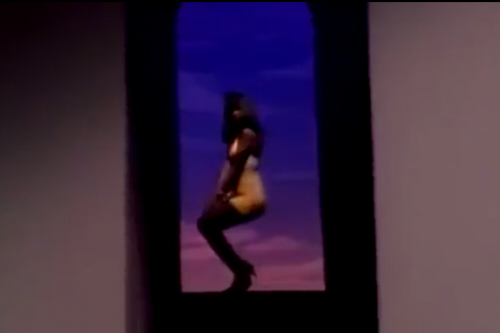“Baby Got Back”: A 1992 Revolution
Christopher J. Smith
Born Anthony Ray in 1963, Seattle-based rapper Sir Mix-a-Lot developed a diversified career out of early success in the niche market of a regional rap scene. “Baby Got Back,” was from his 1992 album “Mack Daddy,” and it became a cross-market anthem, especially in the wake of its accompanying music video, which was briefly banned by MTV, because “Baby Got Back” is a paean to female anatomy.
In the 1980s, women’s beauty magazines like Vogue and Cosmopolitan – as well as and music videos by rock bands like Whitesnake, Ratt and Bon Jovi – objectified big-haired, thin-hipped Caucasian models. When “Baby Got Back,” was released, the idea of celebrating contrasting female body types was itself revolutionary – but what made it more so was that “Baby” represented a celebration of the black and brown female body.
The video begins with parodic dialog: two teenaged Caucasian actresses observe an African American model in a tight knit dress through a stylized keyhole:
Oh, my, God Becky, look at her butt
It is so big, she looks like
One of those rap guys’ girlfriends.
… She’s just so black
In an abrupt cut, Mix’s baritone roar enters:
I like big BUTTS and I cannot lie…
The camera pulls back on Mix, in his iconic Mack-Daddy leather coat and fedora, perched atop a giant abstract peach-shaped pair of honey-colored hills, surrounded by his crew and African American female dancers in tight workout shorts.

In contrast to the ornamental white models in mainstream rock videos of the period, the women in “Baby Got Back” are not posed semi-nude around the frame like appliances or trophies. Instead – as was common in hip-hop videos and live dance in the period – the female dancers provide a powerfully physical, visible and independent counterpoint to the rhythm track.
Certainly, camera angles and editing do not neglect the female posterior. But more significantly, the dancers are powerful individuals, interacting verbally with one another and the rapper. And one climactic moment in the rhythm track, a whiplash electronic crack, is mirrored by one dancer’s flawlessly-executed martial arts side-kick.
Mix’s rhymes further explicate the song’s political critique of body aesthetics:
I’m tired of magazines
Sayin’ flat butts are the thing…
So your girlfriend rolls a Honda, playin’ workout tapes by Fonda
But Fonda ain’t got a motor in the back of her Honda…
So Cosmo says you’re fat
Well I ain’t down with that…
When “Baby Got Back” exploded on MTV, Mix and its other producers were explicit about the political message: They pushed back against network executives’ timidity regarding both the topic and the representation of empowered booties. Patti Galluzzi, a senior vice-president at MTV at the time, recalled Mix telling her that the song was a response to the constant bombardment of women and girls by images of superthin models in the media.
Mix even objected, during the video shoot, to the semi-naked costuming originally intended for the dancers, telling the director “This song is called ‘Baby Got Back,’ not ‘Baby’s a Ho.”
Perhaps the most relevant argument against the interpretation of “Baby Got Back” as merely sexist objectification comes from Amylia Dorsey-Rivas, the song’s original inspiration and voiceover artist: “Even if I’d never contributed to it, I would still have appreciated what it did. When people said it was degrading, I would say there’s not one thing degrading about that song to anyone who felt like me.”
Mix himself said, in an “oral history” interview with Vulture’s Rob Kemp in 2013: “Black women got the song immediately. Everybody (from) my mom, to Amylia, to every black woman I knew or met said ‘about time’ and ‘thank you.’ Girls who didn’t have big butts thought the song was cute, but girls who did have butts thought it was a revolution.”
In 2013, 20 years after the song dropped and MTV belatedly got on board, Sir Mix-a-Lot returned to his hometown to perform with the Seattle Symphony in their “Sonic Encounters” series, which is intend to attract new and more diverse audiences. The tumultuously joyful reception of the song – and the magnificent diversity of body types among the women who Mix invited to rush the stage in celebration – was the clearest possible illustration of dance music’s capacity to infiltrate, subvert, empower and liberate the imagination.








